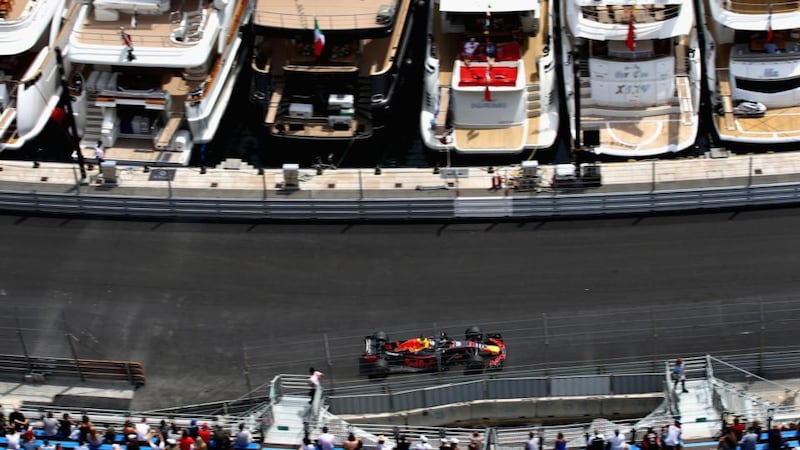Formula One has long been happy to paint the Monaco Grand Prix with the very broadest of brush stokes. Here then, the streets of Monte Carlo glory in the sport’s glamour, its ostentatious wealth over a weekend that embraces the spotlight and the celebrities it attracts beneath the clamour of a thousand flashbulbs. It is yachts and it is parties on yachts, where people come to be seen and F1 in turn sells itself to the world in the sunshine by the sea.
A bold and not a little brash picture is but the facade of a meeting that remains the most demanding test in Formula One. What really matters here is what happens behind the wheel, and Monaco is still the drivers’ race.
When its founder, Antony Noghès, first brought a grand prix to the streets of Monte Carlo in 1929, it was clear that it was something special. The Nice-Matin newspaper described it in terms that remain valid. "It goes without saying that the track is made up entirely of bends, steep uphill climbs and fast downhill runs. Any respectable traffic system would have covered the track with 'danger' signposts – left, right and centre," read the report.
Hosting its 76th grand prix this weekend, Monaco will once again offer its singular examination of risk and reward, which the greats have always embraced. Yet the race is a curious meeting. The glamour attracts casual viewers across the world who may not tune into another all season, but then often presents a rather prosaic procession. For many fans it can be a chore to be endured.
Challenge
If the show is sometimes wanting, the drivers do not care. At Monaco the test is all. Martin Brundle equalled his best finish with second place here for McLaren in 1994. He was beaten by Michael Schumacher and had passed Gerhard Berger round the outside of Mirabeau to claim the place. He remembers the race and, indeed, every time he faced down Monte Carlo's walls with affection.
“I have always loved Monaco,” he says. “It’s the challenge, and is today still seen as the drivers’ race rather than anything else.”
Unsurprisingly when inch-perfect driving is required repeatedly over 78 laps, Brundle is explicit on why the race matters so much when you are in the cockpit.
“It’s because drivers can really make a difference. There is nowhere to make a mistake. You arrive in casino square at 180mph. Imagine 180mph, it seems inconceivable. You are making millions of conscious and subconscious decisions and taking actions. You live on your wits but there is always more time, you can brake later, turn in faster but the peril is always there.”
Brundle's second place was bittersweet. It was the first race held after the deaths of Ayrton Senna and Roland Ratzenberger at Imola. The Brazilian was the master of Monaco with six wins, and had famously found an entire other plane during qualifying in 1988. "I was no longer driving the car consciously," Senna said. "I was kind of driving it by instinct, only I was in a different dimension."

Indeed he was, ultimately 1.4 seconds ahead of team-mate Alain Prost.
Brundle understands the feeling. “Senna described it as an out-of-body experience, and I can relate to that. You do get in a bit of a trance because it is absolutely relentless for two hours. Any slight error and it is going to be a big crash. You can’t miss-kick the ball or slice a backhand. The peril added to the reward of really attacking the track is great.”
Very intense
Lewis Hamilton, who has always been clear in how much he delights in Monaco's challenge, echoed Brundle's views this week.
“It’s very intense. It’s the most technical and mentally challenging circuit of the whole season. There’s also the heightened aspect of just wanting to shine at a track like this.”
Brundle will return to the grid this weekend in Monaco, but now in the role he has made his own, with his pre-race grid walk, a tradition he began 21 years ago. It has proved to be part of a remarkably successful and respected career in broadcasting. But he still describes himself as “a racing driver who does TV”, and that is what really informs his passion for Monaco.
“It is so special after the race. The feeling that somehow you have survived a week in Monaco, glancing from barrier to barrier, from bump to kerb.”
Which will be the task in hand in qualifying on Saturday, where Red Bull look in fine form to threaten the Mercedes and Ferrari hegemony, and is, far beyond the sound and fury of Monaco's extravagance, the real reason this race is special.











